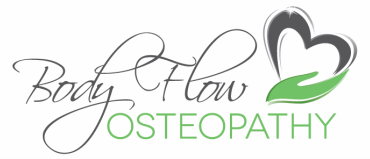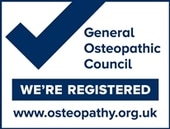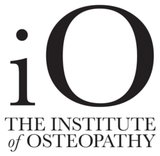Frequently Asked Questions
Q. What can I expect when I see an osteopath?
A. Visit our "what to expect" page to find out
Q. Do I need to bring anything with me?
A. If you are taking any prescription medicine, please bring your prescription list with you. If you have had any recent investigations such as blood tests, x-rays or MRI scans please bring a copy of the report with you. This is helpful to have but not necessary.
Q. What training do osteopaths have?
A. Undergraduate students follow a four or five-year degree course combining academic and clinical work. Qualification generally takes the form of a bachelor’s degree in osteopathy – a BSc(Hons), BOst or BOstMed – or a masters degree in osteopathy(MOst). Many osteopaths continue their studies after graduating and are required to update their training throughout their working lives. They must complete at least 30 hours of Continuing Professional Development per year just like medical doctor or dentist do.
Q. I’ve heard that Osteopaths ‘click’ bones. Does this hurt?
A. The "click" heard during manipulation is cause by little pockets of gas releasing from within the fluid found in the joint cavity, just like when cracking your knuckles. Osteopaths work in a variety of ways, using techniques appropriate to your condition. If your osteopath feels that adjustments are right for you, she/he will suggest it at the time. Adjustments are very specific and highly controlled movements which require specialised training to perform safely. If however, you are particularly concerned, please be sure to raise the matter with your Osteopath during consultation so your treatment can be adapted accordingly; your osteopath will only ever perform an adjustment with your permission. We aim to ensure your comfort at all times and in nearly every case, we can treat successfully without using any "clicking".
Q. What are the Risks & Benefits of Osteopathic Treatment?
A. Approximately 50% of people will experience no negative side effects at all from Osteopathic Treatment at all.
Approximately 49% of people will experience mild side effects after treatment which typically lasts 24-48 hrs but sometimes longer. The most common side effects typically include feeling sore and tender, tired, head achy and stiff.
Moderate side effects happens approximately 1% of the time or 1 in a 100 patients will experience them. The most common reported symptoms are more severe pain, bothersome numbness or tingling lasting more than a week.
In comparison, up to 15% of users or 15 in 100 people report side effects (from mild to severe) from taking paracetamol.
Serious side effects are very rare at 0.003% or 1 in 36 079 people and are those requiring emergency medical care and long term damage which may be irreversible. These can include strokes, nerve damage, bladder or bowel weakness or death.
We do a comprehensive medical history to allow us to identify potential risk factors in order to adapt our choice of techniques and choose the safest treatment for you.
In comparison, your chances of dying in a RTA in the UK on any given year is 1 in 20 000, this is over 1.5 times the chances of you experiencing severe side effects from Osteopathic treatment.
Furthermore, your chances of dying in a RTA in the UK in your lifetime is 1 in 240, which is 150 times more than experiencing a severe side effect from Osteopathic treatment.
The Expected Benefits:
The good news is that 70% of people report an improvement to their symptoms after their first Osteopathic Treatment.
80% or 8 in 10 people report an improvement after 3 to 4 treatments.
In conclusion, osteopathic treatment is very safe but like all interventions (including taking paracetamol), there are risks which can be difficult to predict or mitigate.
However, the large majority of people feel better within 1-4 treatments with no adverse side effects at all.
Sources:
Mint Practice Ltd leaflet 2015
http://www.bandolier.org.uk/booth/Risk/trasnsportpop.html
https://www.drugs.com/sfx/paracetamol-side-effects.html
Q. What is the difference between an Osteopath and a Chiropractor?
A. There are a lot of similarities between the two profession and in fact, both stemmed from the same root and share many or their philosophies. The differences are most noticeable in the way treatments and care is delivered: chiropractors generally offer treatment sessions of about 15 mins, whereas osteopath will typically allow 30-45 mins for your treatment. Chiropractors tend to work with your clothes on, whereas osteopaths will typically ask you to remove some clothing to work directly on your skin. Chiropractic treatments tend to be very focused on spinal manipulations, whereas osteopaths typically address peripheral joints, muscles and other soft tissues more extensively. Chiropractors frequently do routine X-rays of your spine before they start treating you and tend to use more high-tech equipment, whereas osteopaths largely rely on a highly developed sense of touch called palpation and will only refer you for x-rays and other scans if they feel it is in your best interest, keeping unnecessary radiation exposure and cost to a minimum. Chiropractors may want to see you several times a week in the early stages of your treatment and usually sell large treatment packages for ongoing care. Osteopaths tend to space out treatments a little more and don't often book more than 1 treatment weekly in the early stages, quickly spacing them out. Osteopaths also recommend ongoing care but it is seldom sold in "packages". Lastly, a technical difference: chiropractors call themselves "Doctors" and osteopaths don't, although both receive an equivalent degree lasting 4-5 years and both are regulated professions.
Keep in mind that there are immense variation in the way each practitioner practices and this is true for both profession so it is worth taking time to speak to a prospective practitioner to find out more on how they work and decide if it is right for you. I have yet to meet someone who successfully mixed chiropractic and osteopathy as adjunct therapies but I would suggest that their similarities probably make them less compatible as a complementary therapy to each other.
Since the 1st April 2017, Osteopaths have joined the existing 12 health professions which fall under the remit of the Chief Allied Health Professions Officer at NHS England. Chiropractors have not received this same status from NHS England.
Chief Allied Health Professions Officer, Suzanne Rastrick, said: “I am very pleased to welcome these two additional professions within my remit. We are committed to making greater use of these professionals in all aspects of NHS service delivery to promote the adoption of new ways of working across the health and care system and to improve patient care. The priority is to ensure we realise the full potential of all fourteen professions to contribute to prevention and health promotion, improving outcomes and patient experience, increasing capacity and improving cost-effectiveness.”
Read more here.
Q. What is the difference between an Osteopath and a Musculo-Skeletal Physiotherapist
A. Although there are similarities between the two professions and both treat the same musculoskeletal problems, one approach may work better for certain people than the other. In term of treatment, physiotherapy tends to be more specific to an area than osteopathic treatment. For example if you were having physio for a knee problem, they would mostly work in the area around the knee joint as well as giving you some knee exercises to carry out at home. However an osteopath would treat your body as a whole and would want to include treatments that would improve all structures affecting the knee, the knee itself and your posture as a whole (so they might want to treat your knee, hip, pelvis and upper back and give you advice and specific exercises on how to improve your posture to reduce the strain on your knee).
Osteopaths may also give you exercises to directly rehabilitate your injury. Osteopaths train for 4-5 years whereas physiotherapists generally train for 3 years. Osteopaths are trained to diagnose whereas physiotherapists are often referred patients who already have a diagnosis, although this may not always be the case.
A physiotherapist might also use laser therapy, ultrasound or a trans cutaneous electrical nerve stimulation (TENS) machine to treat your problem area. Ultrasound work in a similar way to deep massage by generating movement and heat in the soft tissues targeted by the machine which releases tension in the area. TENS machines are thought to reduce the pain felt in an area by releasing tiny waves of electrical pulses that stimulates the nerves. Some physiotherapists do specialist work, i.e.: Scoliosis S.O.S, stroke rehabilitation, etc. and have a very important place in our healthcare system.
In conclusion, one profession is not superior to the other: physiotherapy or osteopathy may simply be better suited to a specific problem or a specific person and often, they can be combined successfully for maximal benefits.
Q. What is the difference between Western Medical Acupuncture and Traditional Chinease Acupuncture?
A. The only similarity is that both approaches use needles to achieve results. Traditional Chinese acupuncture is a healthcare system based on ancient principles dating nearly two thousand years and is based in the principle that illness and pain occur when the body’s qi, or vital energy, cannot flow freely. Treatment then use needles to restore the flow of qi along certain meridians paths.
Western medical acupuncture is the scientific take on traditional Chinese acupuncture: needles are used to stimulate the nervous system and muscles in order to promote local healing, inactivate myofascial trigger points, reduce pain throughout the body and improve general well being - but is not concerned with the beliefs of traditional Chinese acupuncture. Needles are simply used for their known effect on the body’s neuro-physiology.
Q. Do you treat people with private medical Insurance?
A. Many private health insurance policies provide cover for osteopathic treatment. It may be possible to claim for a course of treatment but you should check in advance with your insurance company before seeking osteopathic treatment, in order to confirm the available level of cover and whether you will need to have a referral from your GP or a specialist. Also check that the osteopath you want to see is registered with your insurance company.
Q. Can I see an Osteopath on the NHS?
A. Currently, access to osteopathy on the NHS is limited, but services are becoming more widespread as commissioning authorities recognise the benefits of providing osteopathy to patients. To find out if NHS treatment is available in your area, speak to your GP and/or contact your local primary care trust.
Q. Do I need a GP referral to see an osteopath?
A. Most patients 'self refer' to an osteopath for treatment. Although referral by a GP is not necessary, patients are encouraged to keep both their GP and osteopath fully informed, so that their medical records are current and complete and the patient receives the best possible care from both healthcare practitioners.
Q. I’ve been in an accident and need treatment. Do you see patients involved in such cases?
A. Yes, we do. It is important however, that you mention it to your osteopath on your first visit so we can ensure you the very best support during your case and the most cost effective route of payment
Q. Are you insured?
A. Yes. All our partners are qualified Osteopaths and are insured and registered with the General Osteopathic Council.
Note that our International partners are not required to be registered with the GOsC as this is a British organisation.
Q. What should I do if I have concerns about the osteopath or the treatment I have received?
A. If you have concerns about the competence or the professional conduct of your osteopath, the first step to take is to contact them or the clinic's principal directly to discuss why you have concerns or are not satisfied. Most complaints arise from inadequate communication so give your osteopath the chance to make things right with you. If you have been unable to resolve the issue satisfactorily with the osteopath or their employer, the General Osteopathic Council will advise on the next steps to take under a formal complaints procedure.
Q. Still have a question?
A. Contact us now and we'll answer it!



